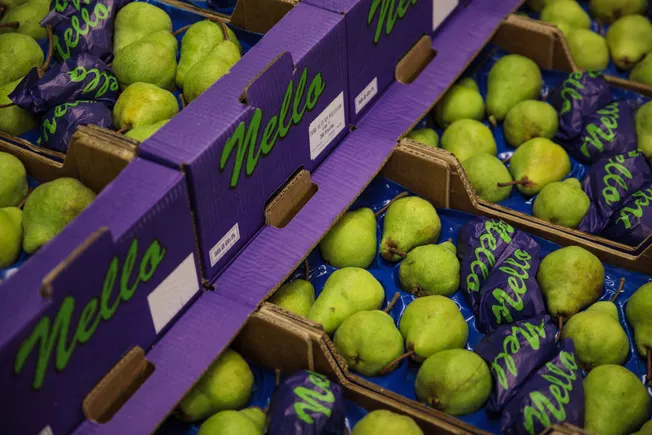Last year’s historic deep freeze has resulted in a significant decrease in U.S. pear production, with Northwest growers anticipating the smallest crop in four decades.
Growers experienced a harvest that was only two-thirds the size of the previous year, a 31% decrease from the five-year average. The Bosc crop, known for its firm and dense flesh ideal for baking, was the most severely affected, with a decline of over 60% from the previous year.
Around 80% of the nation’s pears originate from the Northwest, leading experts to warn consumers to expect fewer fruits on grocery store shelves.
“There’s still a Northwest pear crop, but it was significantly smaller due to the damage,” explained Jon DeVaney, president of the Washington State Tree Fruit Association.
The surviving pears are expected to show signs of “russeting,” characterized by a large brown ring around the fruit resulting from frost-damaged blossoms. While the taste remains unchanged, the appearance may deter buyers.
“Consumers are visually driven when it comes to food choices. If the fruit doesn’t look appealing in the store, it may not sell at all or only at a significant discount,” DeVaney noted.
Climate change poses a significant threat to pear production, as the fruit is sensitive to extreme rainfall and temperature fluctuations. Research indicates that flowering times in pears have shifted approximately 11 days earlier in the past three decades, likely due to temperature changes.
To address these challenges, Washington State University has deployed over 160 weather stations to provide growers with real-time weather data and forecasts. Additionally, the university is leveraging artificial intelligence for data modeling to enhance long-term predictions and assist growers in making informed decisions.
Despite initial concerns of a harsh winter in 2025, current weather conditions have been more favorable for pear production. While it’s too early to make concrete predictions, growers are optimistic that the crop will rebound following a smaller harvest.

